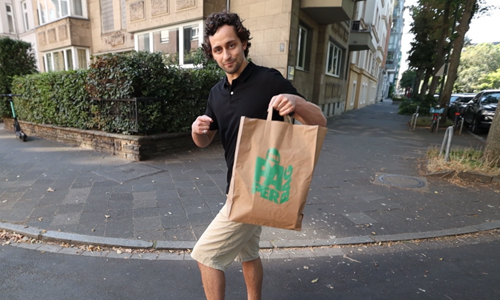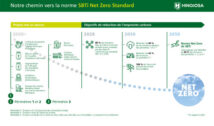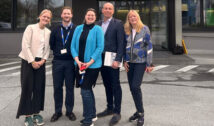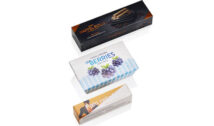
With various activities throughout Europe, the European Paper Bag Day will take place for the third time on 18 October. The annual action day raises awareness of paper carrier bags as a sustainable and efficient packaging option that helps consumers to avoid littering and minimise negative impacts on the environment. This year’s edition will centre around the reusability of paper bags. For this occasion, initiators “The Paper Bag”, Europe’s leading kraft paper manufacturers and paper bag producers, have also launched a video series in which a paper bag’s reusability is tested and demonstrated in different everyday situations.
Most consumers are increasingly concerned about the environment. This is also reflected in their consumption behaviour. By choosing environmentally friendly products, they try to reduce their personal carbon footprint. “A sustainable packaging choice can make a significant contribution towards an eco-friendly lifestyle,” states Elin Gordon, Secretary General of CEPI Eurokraft. “On the occasion of the European Paper Bag Day, we want to promote the advantages of paper bags as a natural and sustainable packaging solution that is durable at the same time. In this way, we aim to support consumers in making responsible decisions.” As in previous years, members of “The Paper Bag” platform will celebrate the European Paper Bag Day with different events. This year, the activities are centred around a thematic focus for the first time: the reusability of paper bags.
Paper bags as reusable packaging solutions
“Choosing a paper bag is only the first step,” says Elin Gordon. “With this year’s theme, we would like to educate consumers that they should also reuse their paper bags as often as possible to minimise impacts on the environment.” According to a survey by GlobalWebIndex, consumers in the US and UK have already understood the importance of reusability as they value it as the second most important factor for environmentally friendly packaging, behind only recyclability[1]. Paper bags offer both: they can be reused several times. When the paper bag is no longer good for another shopping trip, it can be recycled. In addition to the bag, its fibres are also reusable. The long, natural fibres make them a good source for recycling. On average, the fibres are reused 3.5 times in Europe.[2] Should a paper bag not be reused or recycled, it is biodegradable. Due to their natural compostable characteristics, paper bags degrade in a short period of time, and thanks to switching to natural water-based colours and starch-based adhesives, paper bags do not harm the environment. This further contributes to the overall sustainability of paper bags – and to the circular approach of the EU’s bio-economy strategy. “All in all, when using, reusing and recycling paper bags, you do good for the environment”, summarises Elin Gordon.
Video series tests reusability
But is it realistic to reuse paper bags more than once? In a four-part video series, the reusability of paper bags is put to the test. With heavy loads of up to 11 kilos, bumpy transport methods and contents with moisture or sharp edges, the same paper bag has to survive many different challenges. It accompanies the test person on demanding shopping trips to the supermarket and fresh market and supports him by carrying books and picnic utensils. The video series will be promoted on the social media channels of “The Paper Bag” around the European Paper Bag Day and can also be watched here.
How to participate
All communication activities taking place around the action day will be communicated on the social media channels of “The Paper Bag” under the hashtag #EuropeanPaperBagDay: on the Facebook fan page “Performance powered by nature” and the LinkedIn profiles of EUROSAC and CEPI Eurokraft. Consumers are invited to participate in the discussions, visit the local events or to join in with their own activities, using the hashtag.
[1] GlobalWebIndex, March 2019, base: 1,589 (US) and 2,244 (UK) Internet users aged 16–64
[2] MONITORING REPORT 2018; European Declaration on Paper Recycling 2016-2020; page 3

































